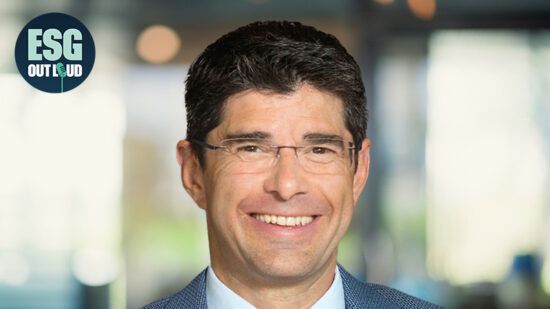There is an increasing interest in ESG in private equity, according to Aga Siemiginowska, head of sustainability, Oakley Capital.
Here Siemiginowska explains how the firm helps develop company ESG strategies, how it’s improving its own diversity and how it has been working to apply sustainability regulation and frameworks to private equity.
Are you receiving more interest in ESG or sustainable investing from your investors?
Investors have been paying more attention to the contours and efficacy of managers’ ESG strategies. This is reflected in the expanding number and scope of questionnaires that our LPs send us to gather data on ESG performance on both us as a manager, and our underlying investments.
However, GPs are also driving ESG innovation ourselves, which in turn attracts LPs’ interest.
Give an example of where Oakley has implemented an ESG or sustainability-driven change at a portfolio company.
Our work with ACE Education is a strong case of collaboration with management teams. ACE Education is a leading European higher education platform focused on sports management, design, fashion and hospitality, and it has more than 20 campuses in France and abroad and more than 8,000 students.
In 2022, Oakley supported ACE in developing its first ESG strategy, including formally developing an ESG Action Plan, and in inspiring student-led green initiatives on campuses. The ESG strategy seeks to leverage learnings of measuring and communicating quality to measure and share environmental KPIs across the campuses. This has seen ACE roll out a new internal dashboard, with campus-specific KPIs and information on green initiatives and practices.
Oakley is also an active participant of the initiative Climat International (iCI), where a network of 250 members collaborate on finding solutions for climate related challenges within private markets. We are excited to be part of an effort that tries to solve challenges that are bigger than our individual companies.
Oakley has been engaged with how sustainable investment regulation, such as SFDR, and disclosure frameworks, such as the TCFD in Europe, will apply to private equity – what is the current state of play and what can we expect in future?
The TCFD is a great framework that provides a consistent approach to climate risk, but we see a desire for practical guidance that helps apply the TCFD framework specifically for private equity.
The iCI TCFD guidance (which was developed in conjunction with the BVCA and KPMG) addresses some of the unique considerations for private equity firms, including the unlisted, SME nature of companies held, long-term fund holding periods and significant changes to portfolio composition over the holding period.
While developing the guidance, we spoke to many practitioners, as well as academics and advisers, to try to understand and address the critical ‘pinch points’. We’re using the guidance internally to help drive our approach and reporting, and I hope others are doing the same.
SFDR has had a major impact in galvanising firms to consider their sustainability practices and bring sustainability to the forefront of investor discussions. We are also aware of and paying close attention to conversations around its complexity, given that the EU is seeking consultation on potential changes to the regime just a few years after it came into force. We hope that the outcome will be a simplified regime which delivers clarity and ESG transparency to investors.
Looking ahead, we recognise the need for an elegant and robust ESG disclosure framework, perhaps even a label, that captures the sustainability characteristics of a fund. However, we would like the framework to build on the good work already done, better acknowledge the difference between private asset funds and publicly listed ones, and account for how private asset managers implement sustainability initiatives within their investments.
Oakley is a member of Level20 – how does it plan to achieve 20% senior positions held by women in its own operations?
This all starts with increasing the pipeline of female talent within Oakley, where we have made progress in diversifying our workforce. Between 2021 and 2023, the makeup of the Oakley team has shifted from 30% women to 47%, stemming in part from a concerted effort in developing our partnerships with recruiters.
We’ve also started our own internal network, the Oakley Women’s Leadership group, which brings together many of our emerging and existing women leaders in forum to share successes and support one another’s development journey.
Our focus now is on developing that talent towards leadership positions via transparent, fair performance management processes and career development tools. We expect many of our recent new hires to grow with the firm into senior leadership positions.








